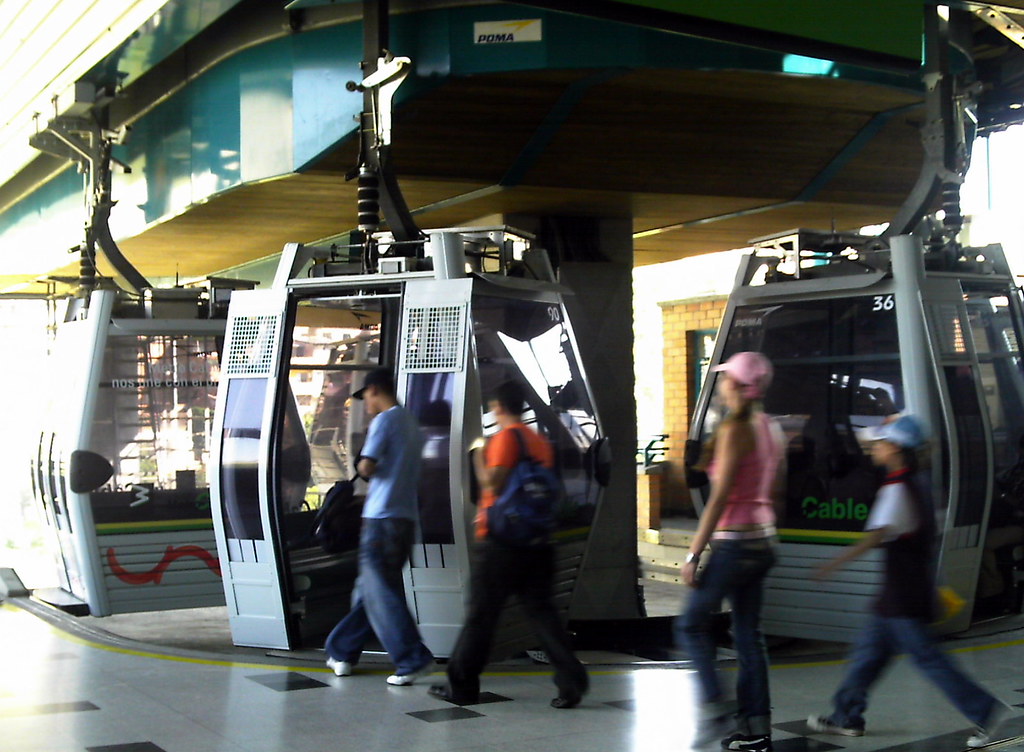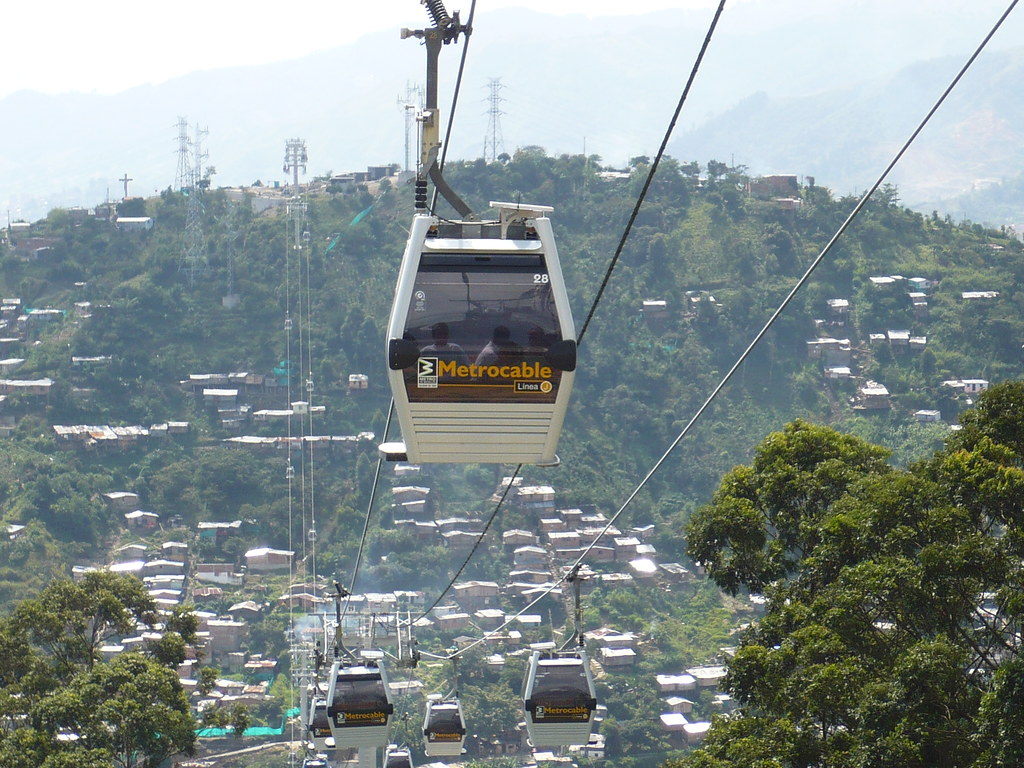ShonTron
Moderator
Member Bio
- Joined
- Apr 24, 2007
- Messages
- 12,400
- Reaction score
- 9,048
- Location
- Ward 13 - Toronto Centre
I was at a very interesting small-group session this evening where the topic was discussing the role of cable-car technologies in urban setting, but specifically aerial tramway/gondola systems as public transit (as opposed to as the traditional roles of ski lifts or tourist transports; an exception might be the Roosevelt Island Tram).
The meeting is held under "Chatham House Rules", so I can not say who was at that meeting. But I am free to mention what it was about and the discussion that followed.
The focus was on the Medellin, Colombia "Metrocable" system of feeder tramways to the existing metro system in Colombia's second city. This was the first modern application of aerial trams as public transport, linking the barrio of Santo Domingo (a poor, unsafe slum) with the metro. It was a major factor to the improvement of some of the barrios.
There are certainly some serious pros: the lines are cheap to implement, as they require little construction on the ground. Most of the system is pre-manufactured, including towers, cables, vehicles and motors; only the stations need to be built on-site. The first line in Medellin, Line K, cost only about $25 million for a 2 kilometre, 4 station line. Cars come very often, so the small cabin (which can hold up to 10 total) capacity is made up, and this is the ultimate in grade separation.
But there are drawbacks: capacity is limited (up to 3,000 per hour), speed is limited (up to 30-35 km/h crusing speed, average speed lower) and there are aesthetic issues. The systems built in Medellin (and later Caracas) are feeders to bona-fide metro systems.
Of course, the discussion led to possible applications here in North America, such as Toronto. One participant demonstrated how it could be used as a intermediate "downtown relief line" using the Lower Don River ravine to reach downtown from Castle Frank or Broadview. But perhaps more realistic routes could be to Toronto Islands or to the Portlands from the ferry docks, or across the St. Lawrence River in Montreal or Quebec City or other similar situations. I didn't really buy the DRL idea, though it is nice to see how that particular subway line got mentioned as a need.
One could say that this is another gadgetbahn technology, like PRT or Monorail or Linear Induction. But at least there's dozens of working examples, but outside South America, they are in very limited types of applications.
Nevertheless, it was a very interesting discussion.
Here's some Creative Commons pics off of Flickr that I found of Medellin's system.

(medea_material)

(chilangoco)
And there is a technology advocacy link:
http://gondolaproject.com/
The meeting is held under "Chatham House Rules", so I can not say who was at that meeting. But I am free to mention what it was about and the discussion that followed.
The focus was on the Medellin, Colombia "Metrocable" system of feeder tramways to the existing metro system in Colombia's second city. This was the first modern application of aerial trams as public transport, linking the barrio of Santo Domingo (a poor, unsafe slum) with the metro. It was a major factor to the improvement of some of the barrios.
There are certainly some serious pros: the lines are cheap to implement, as they require little construction on the ground. Most of the system is pre-manufactured, including towers, cables, vehicles and motors; only the stations need to be built on-site. The first line in Medellin, Line K, cost only about $25 million for a 2 kilometre, 4 station line. Cars come very often, so the small cabin (which can hold up to 10 total) capacity is made up, and this is the ultimate in grade separation.
But there are drawbacks: capacity is limited (up to 3,000 per hour), speed is limited (up to 30-35 km/h crusing speed, average speed lower) and there are aesthetic issues. The systems built in Medellin (and later Caracas) are feeders to bona-fide metro systems.
Of course, the discussion led to possible applications here in North America, such as Toronto. One participant demonstrated how it could be used as a intermediate "downtown relief line" using the Lower Don River ravine to reach downtown from Castle Frank or Broadview. But perhaps more realistic routes could be to Toronto Islands or to the Portlands from the ferry docks, or across the St. Lawrence River in Montreal or Quebec City or other similar situations. I didn't really buy the DRL idea, though it is nice to see how that particular subway line got mentioned as a need.
One could say that this is another gadgetbahn technology, like PRT or Monorail or Linear Induction. But at least there's dozens of working examples, but outside South America, they are in very limited types of applications.
Nevertheless, it was a very interesting discussion.
Here's some Creative Commons pics off of Flickr that I found of Medellin's system.

(medea_material)

(chilangoco)
And there is a technology advocacy link:
http://gondolaproject.com/





